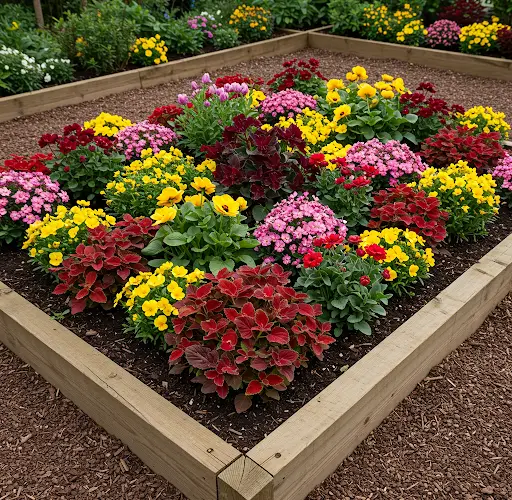How to Prepare Your Garden Bed for Spring
Preparing your garden bed for the upcoming spring season is a straightforward and rewarding task. By the end of the process, you’ll have a nutrient-rich bed teeming with beneficial microbes, ready to nurture your plants. This simple but effective method can help you create the perfect environment for plant growth and ensure a thriving garden. Let’s walk through the steps together to prepare your garden bed for success.
Step 1: Remove Existing Vegetation
The first step in preparing your garden bed is to address any existing vegetation. This includes cutting back any old plants, removing weeds, and clearing away any leftover plant material from the previous season. Weeds, in particular, can quickly deplete valuable nutrients and space from your soil, so it’s important to remove as many as possible. By doing so, you ensure your plants will have access to all the resources they need for healthy growth.
However, don’t toss the vegetation you cut down. Instead, cut it into small pieces and spread it evenly over the garden bed. These plant materials will gradually break down and enrich the soil with organic matter, helping to improve its structure and nutrient content.
While clearing the vegetation, be careful not to disturb the root balls too much. These roots house a variety of beneficial microbes that play a crucial role in maintaining soil health. By leaving the root balls mostly intact, you allow these helpful microbes to thrive and continue their work in the soil.
Step 2: Add Compost or Decomposed Manure
Once the plant material is spread out on the bed, the next step is to add a layer of decomposed manure or compost on top. This layer does more than just provide nutrients—it brings in an abundance of beneficial microbes that will assist in breaking down the plant material we just added. These microbes are key to creating a healthy, fertile soil ecosystem that supports plant life.
Compost or manure acts as a natural fertilizer, delivering essential nutrients like nitrogen, phosphorus, and potassium. These are vital for strong, healthy plant growth, and they help your garden thrive as the season progresses. The compost or manure also helps improve soil texture, ensuring that the bed is well-drained yet retains enough moisture for your plants.
Step 3: Sprinkle Bone Meal
After adding the compost or manure, the next step is to sprinkle bone meal over the bed. Bone meal is an excellent addition because it is rich in phosphorus and calcium—two nutrients that are critical for plant development. Phosphorus is especially important for promoting strong root development, which is essential for plants just starting out in the spring.
Calcium, on the other hand, plays a key role in the structural integrity of plant cells, helping plants grow sturdier and more resilient to stresses like pests or environmental changes. The slow-release nature of bone meal ensures that these nutrients will continue to nourish the soil over time, providing a steady supply of essential elements for plant growth.
Step 4: Apply Mulch
The final layer in preparing your garden bed is mulch. Mulch offers several benefits and is an essential component of a healthy garden. For this step, we’ll use sawdust, which works wonderfully as a mulch option. Sawdust helps to insulate the soil, keeping it cool during warm weather and warm during colder nights. This temperature regulation is critical for preserving soil health and protecting the beneficial microbes we’ve added so far.
In addition to regulating temperature, sawdust mulch helps retain moisture in the soil. This reduces the need for frequent watering, which is especially helpful during dry spells. It also reduces weed growth by blocking sunlight from reaching the soil, preventing weeds from germinating and taking away precious resources from your plants.
As the sawdust decomposes, it gradually breaks down into organic matter, further enriching the soil. This decomposition process is slow but continuous, ensuring that your garden bed will remain nutrient-rich throughout the growing season. Sawdust is a great mulch option because it’s light, easy to spread, and readily available. It’s also an excellent way to keep your garden bed neat and tidy, as it prevents the growth of weeds and keeps the area manageable.
Final Thoughts
By following these simple steps, you’ll create the ideal environment for your garden bed to thrive. Layering plant material, compost, bone meal, and sawdust builds a strong foundation that supports healthy plant growth throughout the season. Each layer serves a specific purpose—from adding nutrients and organic matter to regulating temperature and moisture—ensuring your plants have everything they need to flourish.
When spring arrives, your garden bed will be teeming with life, ready to support whatever you choose to plant. The decomposed plant material will improve soil structure and moisture retention, while the compost and bone meal will provide a steady supply of nutrients. Meanwhile, the mulch will keep the soil protected and maintain a consistent environment for your plants.
With minimal effort, you’ll set your garden up for a bountiful season of growth. Preparing your garden bed in this way is a sustainable, effective method that ensures long-term soil health and successful plant growth. Your plants will thrive, and you’ll enjoy a garden full of lush, vibrant greenery.
This method not only prepares your garden bed for spring but also contributes to long-term soil fertility. Happy gardening!



